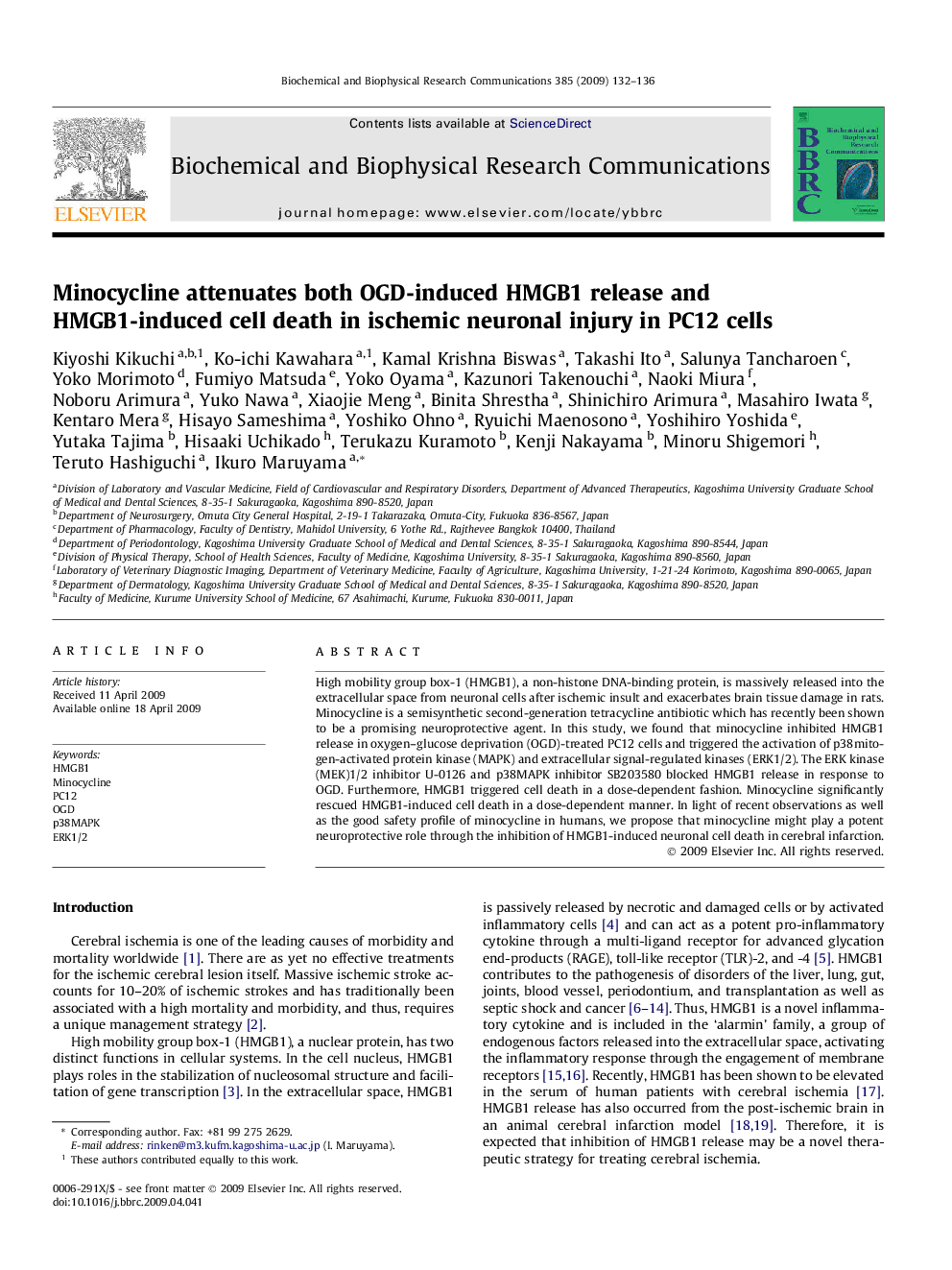| Article ID | Journal | Published Year | Pages | File Type |
|---|---|---|---|---|
| 1933483 | Biochemical and Biophysical Research Communications | 2009 | 5 Pages |
High mobility group box-1 (HMGB1), a non-histone DNA-binding protein, is massively released into the extracellular space from neuronal cells after ischemic insult and exacerbates brain tissue damage in rats. Minocycline is a semisynthetic second-generation tetracycline antibiotic which has recently been shown to be a promising neuroprotective agent. In this study, we found that minocycline inhibited HMGB1 release in oxygen–glucose deprivation (OGD)-treated PC12 cells and triggered the activation of p38mitogen-activated protein kinase (MAPK) and extracellular signal-regulated kinases (ERK1/2). The ERK kinase (MEK)1/2 inhibitor U-0126 and p38MAPK inhibitor SB203580 blocked HMGB1 release in response to OGD. Furthermore, HMGB1 triggered cell death in a dose-dependent fashion. Minocycline significantly rescued HMGB1-induced cell death in a dose-dependent manner. In light of recent observations as well as the good safety profile of minocycline in humans, we propose that minocycline might play a potent neuroprotective role through the inhibition of HMGB1-induced neuronal cell death in cerebral infarction.
